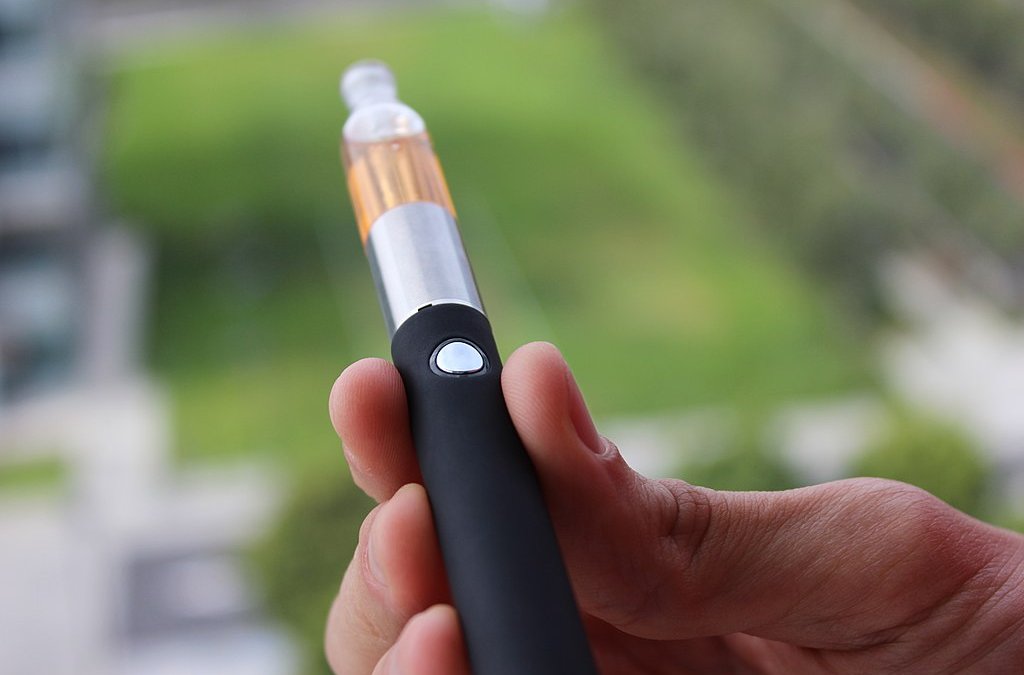WASHINGTON — The American Lung Association’s annual State of Tobacco Control report, released Wednesday, found tobacco and e-cigarette use among teens rose slightly in 2022 after three years of decline.
The higher rates of tobacco use among the nation’s youth come after Congress gave the Food and Drug Administration authority to regulate products containing synthetic nicotine through bipartisan legislation in March 2022. The report found 16.5% of high school students and 4.5% of middle school students used tobacco products in 2022, an increase of about 3% for high schoolers and 0.5% for middle schoolers since 2021.
Thomas Carr, ALA’s national director of policy, said products using synthetic nicotine were supposed to apply to get permission from the FDA to remain in the market. According to the report, synthetic products without pre-market tobacco authorizations became illegal on July 13, 2022, though “delays in enforcement” have left many illegal products on shelves.
“There are still a lot of illegal flavored products in the market and that’s contributing to the high youth rates we’re seeing,” Carr said. “We certainly think that FDA’s been somewhat asleep at the switch on enforcement of this. We’ve certainly been encouraging them.”
Dr. Maria Rahmandar, the medical director of the substance use and prevention program at Lurie Children’s Hospital of Chicago, said there is a negligible difference between synthetic nicotine and nicotine derived from tobacco. She said promoting synthetic nicotine as a safer option is a marketing ploy for companies and helps them get around regulations.
E-cigarette companies have also used an assortment of flavors to attract younger users in recent years. Before the rise in flavored e-cigarette products, Rahmandar said tobacco usage among youth was at “all-time lows.” According to the report, 85% of kids using e-cigarettes used flavored products, and the report stated flavor variety continues to “be a big driver” in usage patterns.
These products can cause nicotine addiction and serve as a gateway to more serious drugs, and Rahmandar said she’s also seen some evidence that shows teens faced worsening asthma and problems with dental health after using these products. She added the long-term consequences of e-cigarette usage are still unclear.
“It took us decades to learn about all the awful things that traditional combustible cigarettes can do,” Rahmandar said. “Unfortunately, it will take time for us to see because these have not been around for very long for us to know what really the long-term consequences are on people, but I suspect they’re not good.”
Banning flavors and closing loopholes are important steps Rahmandar said the government should take to lower youth usage. The FDA denied Juul authorization to sell and distribute its products on July 5, 2022, but Rahmandar said new companies, including PuffBar, have found loopholes to continue distributing flavored synthetic nicotine. The ALA report said PuffBar is one of the most-used brands among children.
Rahmandar said some prominent examples of loopholes include limiting flavors in closed-system e-liquid cartridge products like Juul but not in disposable products like PuffBar, or banning menthol in traditional cigarettes, but not their electronic counterparts.
“I think we’re just leaving space for the tobacco industry to fill because they see the loopholes and they make products to fill those areas,” Rahmandar said. “The more we can be comprehensive and use the lessons we learned in regulating traditional cigarettes, the better we’ll be.”
PuffBar did not respond to a request for comment.
Abby Capobianco, the press officer for the Center for Tobacco Products, told the Medill News Service the FDA has issued marketing denial orders for more than one million flavored e-cigarettes and continues to review premarket applications. It issued a warning letter to EVO Brands LLC and PVG2 LLC, companies that do business as PuffBar, in October 2022.
“FDA is committed to protecting youth from all tobacco products, including e-cigarettes, which are the most commonly used tobacco products by youth,” Capobianco said in an email. “FDA demonstrates this commitment in multiple ways, not only through premarket review of new tobacco products, but also via compliance and enforcement efforts, and successful public awareness campaigns educating teens about the dangers of using tobacco products.”
Aparna Soni, an assistant professor at American University’s School of Public Affairs, said another way to limit e-cigarette usage is to raise taxes. Currently, states like California have additional taxes on traditional products that can add more than $4 to a pack, but she said only about half of all states have placed these taxes on e-cigarettes.
“Some goods are so, so addictive that even if we impose taxes, even if we increase the price, people are so addicted to these goods that they will continue to consume them,” Soni said. “But for e-cigarettes, especially for younger users who haven’t had time to develop that level of addiction yet, we do know that they do respond to prices.”
Soni said these price restrictions would be easier to enforce than regulations like minimum age laws. While people in the U.S. must be 21 years or older to buy tobacco products, she said kids can easily get them from friends and family, or through fake IDs.
Rahmandar agreed the age rule is difficult to enforce, and emphasized sellers should face repercussions, not underage customers. Carr said the FDA should issue guidance to help states enforce these underage selling rules better.
The FDA still needs to finalize its rules surrounding synthetic nicotine, he said.
“We’ve seen some encouraging signs this year,” Carr said. “But we still obviously want to see more action on the part of FDA to get a handle on the illegal market and illegal flavored products in the market.”



